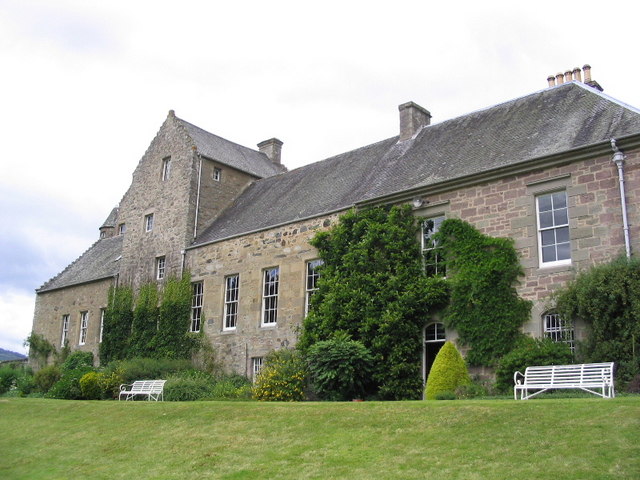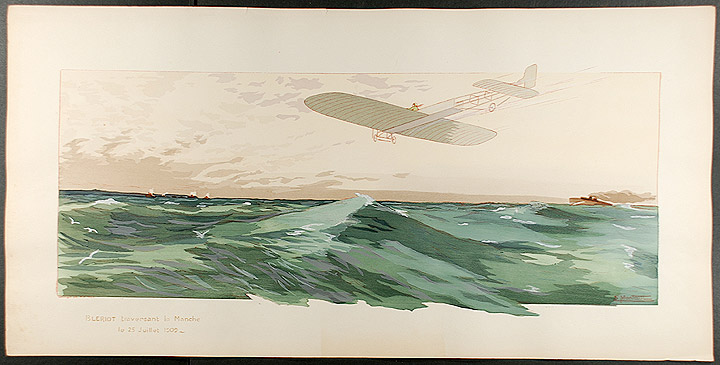|
Margaret Bruce Wells
Margaret Caroline Bruce Wells (née Bruce; 13 June 1909 – 4 December 1998) was a British artist known for her use of woodcut and linocut techniques. Biography Although born in Murthly in Perthshire, Wells attended Queen Margaret School in Scarborough before returning to Scotland in 1928 to study at the Glasgow School of Art. In 1933 she moved to London to study at the Leon Underwood's Brook Green School. In 1935 Wells became his studio assistant and for a time lived in the Underwood's home. Wells developed a passion for fishing and in 1935 produced two sets of prints on the subject, ''Fishing for Bleaks'' and ''Ells by Night'' which were well received. During World War II, Wells served as an ambulance driver and in 1951 she married George Wells, a dermatologist. The couple lived in Chicago for several years during which time Wells studied at the city's Art Institute. During her career Wells exhibited at the Royal Academy and with the Society of Wood Engravers and became an h ... [...More Info...] [...Related Items...] OR: [Wikipedia] [Google] [Baidu] |
Murthly
Murthly (Scottish Gaelic ''Mòrthlaich'') is a village in Perth and Kinross, Scotland. It lies on the south bank of the River Tay, southeast of Dunkeld, and north of Perth, Scotland, Perth. Perth District Asylum, later known as Murthly Hospital, was opened in the village on 1 April 1864 for 'pauper lunatics'. It was the second district asylum to be built in Scotland under the terms of the Lunacy (Scotland) Act 1857. It closed in 1984 and was later demolished. The village has a stone circle, in the former grounds of the hospital. The village formerly had a Murthly railway station, railway station on the Perth and Dunkeld Railway, which closed in 1965. History Around 1770, the Hermitage Bridge (Dunkeld, Scotland), Hermitage Bridge at the nearby The Hermitage, Dunkeld, Hermitage was built by order of John Murray, 3rd Duke of Atholl, presumably to gain access across to some lands leased from Sir John Stewart of Murthly, as well as assisting with the views of the Black Linn and its f ... [...More Info...] [...Related Items...] OR: [Wikipedia] [Google] [Baidu] |
Ashmolean Museum
The Ashmolean Museum of Art and Archaeology () on Beaumont Street in Oxford, England, is Britain's first public museum. Its first building was erected in 1678–1683 to house the cabinet of curiosities that Elias Ashmole gave to the University of Oxford in 1677. It is also the world's second university museum, after the establishment of the Kunstmuseum Basel in 1661 by the University of Basel. The present building was built between 1841 and 1845. The museum reopened in 2009 after a major redevelopment, and in November 2011, new galleries focusing on Egypt and Nubia were unveiled. In May 2016, the museum redisplayed galleries of 19th-century art. History Broad Street The museum opened on 24 May 1683, with naturalist Robert Plot as the first keeper. The building on Broad Street (later known as the Old Ashmolean) is sometimes attributed to Sir Christopher Wren or Thomas Wood. Elias Ashmole had acquired the collection from the gardeners, travellers, and collectors John Tr ... [...More Info...] [...Related Items...] OR: [Wikipedia] [Google] [Baidu] |
Alumni Of The Glasgow School Of Art
Alumni (: alumnus () or alumna ()) are former students or graduates of a school, college, or university. The feminine plural alumnae is sometimes used for groups of women, and alums (: alum) or alumns (: alumn) as gender-neutral alternatives. The word comes from Latin, meaning nurslings, pupils or foster children, derived from "to nourish". The term is not synonymous with "graduates": people can be alumni without graduating, e.g. Burt Reynolds was an alumnus of Florida State University but did not graduate. The term is sometimes used to refer to former employees, former members of an organization, former contributors, or former inmates. Etymology The Latin noun means "foster son" or "pupil". It is derived from the Latin verb "to nourish". Separate, but from the same root, is the adjective "nourishing", found in the phrase ''alma mater'', a title for a person's home university. Usage in Roman law In Latin, is a legal term (Roman law) to describe a child placed in fosterag ... [...More Info...] [...Related Items...] OR: [Wikipedia] [Google] [Baidu] |
1998 Deaths
This is a list of lists of deaths of notable people, organized by year. New deaths articles are added to their respective month (e.g., Deaths in ) and then linked below. 2025 2024 2023 2022 2021 2020 2019 2018 2017 2016 2015 2014 2013 2012 2011 2010 2009 2008 2007 2006 2005 2004 2003 2002 2001 2000 1999 1998 1997 1996 1995 1994 1993 1992 1991 1990 1989 1988 1987 1986 Earlier years ''Deaths in years earlier than this can usually be found in the main articles of the years.'' See also * Lists of deaths by day * Deaths by year (category) {{DEFAULTSORT:deaths by year ... [...More Info...] [...Related Items...] OR: [Wikipedia] [Google] [Baidu] |
1909 Births
Events January–February * January 4 – Explorer Aeneas Mackintosh of the Imperial Trans-Antarctic Expedition escapes death by fleeing across drift ice, ice floes. * January 7 – Colombia recognizes the independence of Panama. * January 9 – The British Nimrod Expedition, ''Nimrod'' Expedition to the South Pole, led by Ernest Shackleton, arrives at the Farthest South, farthest south reached by any prior expedition, at 88°23' S, prior to turning back due to diminishing supplies. * January 11 – The International Joint Commission on US-Canada boundary waters is established. * January 16 – Members of the ''Nimrod'' Expedition claim to have found the magnetic South Pole (but the location recorded may be incorrect). * January 24 – The White Star Liner RMS Republic (1903), RMS ''Republic'' sinks the day after a collision with ''SS Florida'' off Nantucket. Almost all of the 1,500 passengers are rescued. * January 28 – The last United States t ... [...More Info...] [...Related Items...] OR: [Wikipedia] [Google] [Baidu] |
Government Art Collection
The Government Art Collection (GAC) is the collection of artworks owned by the UK government and administered by the Department for Culture, Media and Sport (DCMS). The GAC's artworks are used to decorate major government buildings in the UK and around the world, and to promote British art, culture and history. The GAC now holds over 14,000 works of art in a variety of media, including around 2,500 oil paintings, but also sculpture, prints, drawings, photographs, textiles and video works, mainly created by British artists or artist with a strong connection to the UK, from the sixteenth century to the present day. Works are displayed in several hundred locations, including Downing Street, ministerial offices and reception areas in Whitehall, regional government offices in the UK, and diplomatic posts outside the UK. History The GAC dates its establishment to 5 December 1899, when Reginald Brett, 2nd Viscount Esher, the 2nd Viscount Esher, Permanent Secretary to the Office of Wor ... [...More Info...] [...Related Items...] OR: [Wikipedia] [Google] [Baidu] |
Carnegie-Mellon University
Carnegie Mellon University (CMU) is a Private university, private research university in Pittsburgh, Pennsylvania, United States. The institution was established in 1900 by Andrew Carnegie as the Carnegie Technical Schools. In 1912, it became the Carnegie Institute of Technology and began granting four-year degrees. In 1967, it became Carnegie Mellon University through its merger with the Mellon Institute of Industrial Research, founded in 1913 by Andrew Mellon and Richard B. Mellon and formerly a part of the University of Pittsburgh. The university consists of seven colleges, including the Carnegie Mellon College of Engineering, College of Engineering, the Carnegie Mellon School of Computer Science, School of Computer Science, and the Tepper School of Business. The university has its main campus located 5 miles (8 km) from downtown Pittsburgh. It also has over a dozen degree-granting locations in six continents, including campuses in Carnegie Mellon University in Qatar, Qa ... [...More Info...] [...Related Items...] OR: [Wikipedia] [Google] [Baidu] |
Hunt Institute For Botanical Documentation
The Hunt Institute for Botanical Documentation (HIBD), dedicated as the Rachel McMasters Miller Hunt Botanical Library in 1961, is a research division of Carnegie Mellon University. History HIBD is named for Rachel McMasters Miller Hunt. She donated a collection of botanical books to the university to create HIBD. An annual monetary award is given in her honor by the institute. HIBD was dedicated October 10, 1961. George Hill Mathewson Lawrence, George H. M. Lawrence was the founding director. In 1970, Gilbert Daniels, became the second director. T. D. Jacobsen succeeded Robert Kiger as director in 2019. Description HIBD is an institution of international Bibliography, bibliographical research in the fields of botany, horticulture, and plant science history. It has a research library with over 30,000 works and art holdings. It includes art and bibliography departments. HIBD is better known internationally than in the U.S. It has a collection of Botanical art, bot ... [...More Info...] [...Related Items...] OR: [Wikipedia] [Google] [Baidu] |
Victoria And Albert Museum
The Victoria and Albert Museum (abbreviated V&A) in London is the world's largest museum of applied arts, decorative arts and design, housing a permanent collection of over 2.8 million objects. It was founded in 1852 and named after Queen Victoria and Albert, Prince Consort, Prince Albert. The V&A is in the Royal Borough of Kensington and Chelsea, in an area known as "Albertopolis" because of its association with Prince Albert, the Albert Memorial, and the major cultural institutions with which he was associated. These include the Natural History Museum, London, Natural History Museum, the Science Museum (London), Science Museum, the Royal Albert Hall and Imperial College London. The museum is a non-departmental public body sponsored by the Department for Digital, Culture, Media and Sport. As with other national British museums, entrance is free. The V&A covers and 145 galleries. Its collection spans 5,000 years of art, from ancient history to the present day, from the c ... [...More Info...] [...Related Items...] OR: [Wikipedia] [Google] [Baidu] |
Society Of Wood Engravers
The Society of Wood Engravers (SWE) is a UK-based artists’ exhibiting society formed in 1920, one of its founder-members being Eric Gill. Membership is restricted to artists who use wood engraving, as distinct from the separate discipline of woodcut. The Society also awards honorary membership to collectors and enthusiasts. History The Society of Wood Engravers was founded on 27 March 1920 by a group of 10 artists who wanted to promote wood engraving as a medium for modern artists. Unlike other societies of the time devoted to various aspects of relief printmaking, the SWE survived by successfully engaging upcoming generations and celebrated its centenary in 2020. The development of wood engraving as a medium for artists, as distinct from reproductive trade engraving, began in the 1890s. Charles Ricketts and Charles Haslewood Shannon were the first in modern times to cut the blocks of their own designs or, more to the point, create their designs by the process of engraving ... [...More Info...] [...Related Items...] OR: [Wikipedia] [Google] [Baidu] |





